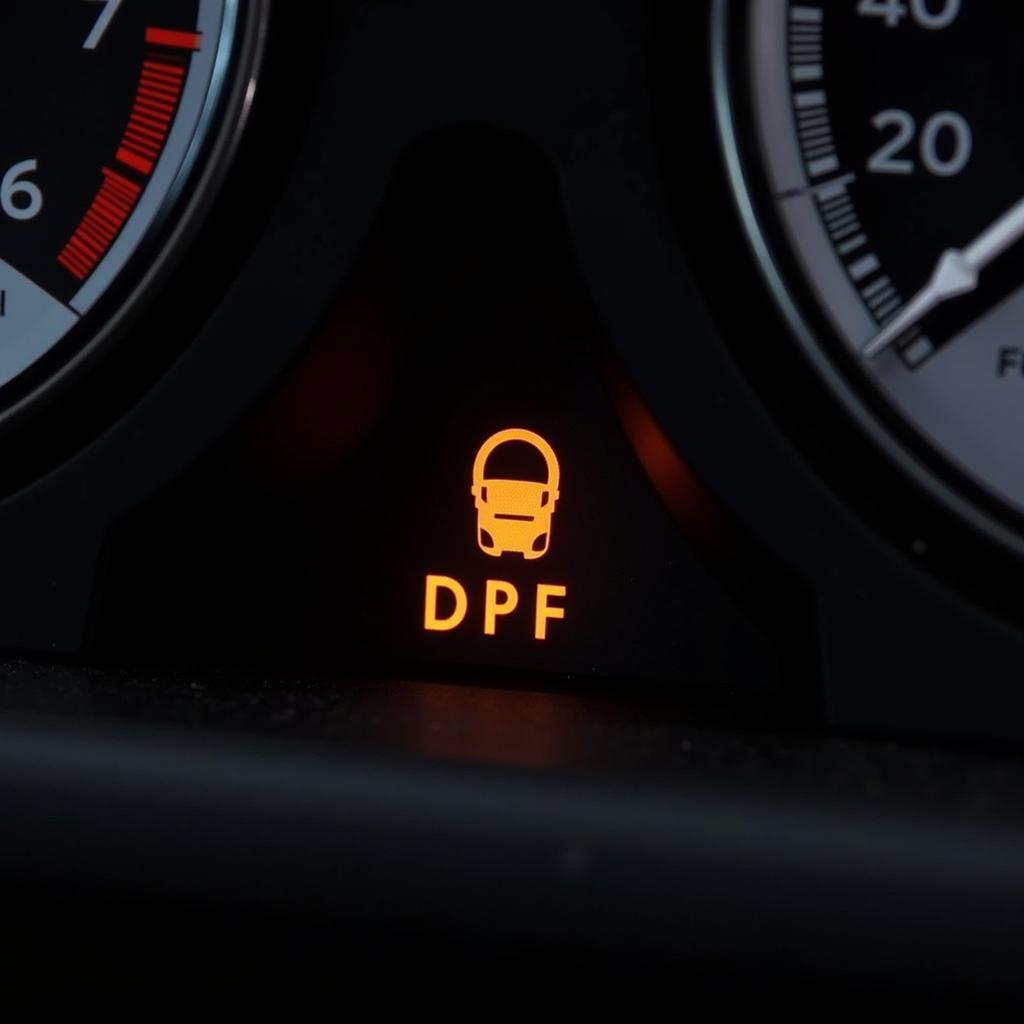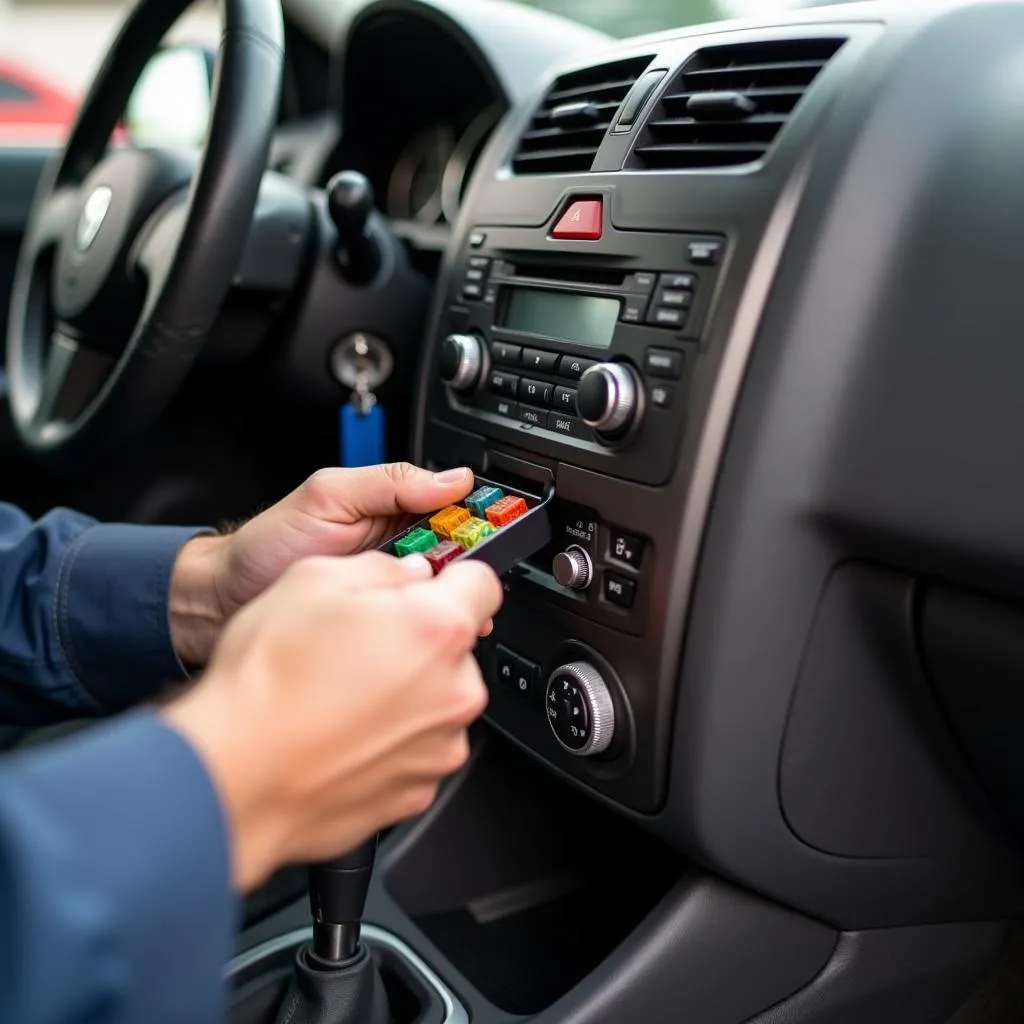A dead car battery is frustrating, especially when it seems to happen repeatedly. Finding a draw on a car battery, meaning something is draining power even when the car is off, is crucial to resolving this recurring issue. This guide provides a step-by-step approach to identifying and fixing parasitic draws, saving you time and money.
Understanding Parasitic Draws: The Silent Battery Killers
What exactly is a parasitic draw? It’s a constant drain on your car’s battery caused by electrical components that continue to consume power even when the vehicle is off. These “energy vampires” can range from faulty interior lights and glove box lights to more complex issues like malfunctioning modules or aftermarket accessories. Ignoring a parasitic draw will not only lead to a dead battery but can also shorten its lifespan. Learning how to find a parasitic draw is a crucial skill for any car owner. Did you recently install a new battery and it’s already dead? Check our guide on new battery installed car wont start.
Common Causes of Battery Drain
Several components are frequent culprits in battery drain scenarios. Some of the most common include:
- Interior lights: A dome light, glove box light, or trunk light left on can drain a battery overnight.
- Faulty door latch switches: If a door latch switch malfunctions, the car may think a door is open, keeping interior lights or other systems active.
- Aftermarket accessories: Incorrectly installed stereos, amplifiers, or alarms can draw power continuously.
- Malfunctioning modules: A faulty control module for a specific system, like the body control module (BCM), can cause a significant draw.
How to Find a Draw on a Car Battery: A Step-by-Step Guide
Finding a draw on a car battery involves a systematic process of eliminating potential sources. Here’s how to pinpoint the problem:
- Gather your tools: You’ll need a multimeter, preferably a digital one with an amp clamp.
- Prepare your vehicle: Ensure all lights, accessories, and the ignition are off. Close all doors and the trunk.
- Disconnect the negative battery cable: This will prevent any potential sparks while you work.
- Connect the multimeter: Set your multimeter to measure DC amps. Connect the red lead to the negative battery terminal and the black lead to the disconnected negative cable.
- Observe the reading: The reading should be very low, ideally less than 50 milliamps (0.05 amps). A higher reading indicates a draw.
- Isolate the circuits: Begin pulling fuses one at a time, observing the multimeter reading after each one. When the reading drops significantly, you’ve identified the circuit with the draw.
- Pinpoint the culprit: Consult your vehicle’s owner’s manual to identify the components on the affected circuit. Inspect each component for faults, checking for loose connections, damaged wiring, or malfunctioning parts.
“A common mistake is not waiting long enough for modules to go to sleep after the car is turned off,” says John Miller, a seasoned automotive electrical diagnostician. “Some modules can take several minutes to power down completely, which can lead to a false reading of a draw.”
Advanced Diagnostic Techniques
If you’ve tried the basic steps and still can’t find the draw, it might be time for more advanced techniques. These might include using a scan tool to check for diagnostic trouble codes related to the suspected circuit or employing specialized equipment like a thermal imaging camera to detect hot spots that could indicate a short circuit. If you’re not comfortable with these techniques, it’s best to consult a qualified automotive electrician. You might be surprised to find that sometimes the issue isn’t a draw at all, but a weak battery. For more information, see our guide on reviving a dead car battery.
When to Seek Professional Help
While finding a draw on a car battery is often doable with basic tools, some situations require professional expertise. If you’ve exhausted the steps above and still haven’t found the source of the drain, or if the problem seems related to a complex electronic system, it’s best to take your car to a qualified technician. They have the specialized tools and knowledge to diagnose complex electrical issues quickly and efficiently.
“Don’t underestimate the complexity of modern car electrical systems,” advises Sarah Chen, an automotive electrical engineer. “A seemingly simple drain can sometimes be traced back to a complex interaction between multiple modules and components.”
Conclusion
Finding a draw on a car battery requires patience and a systematic approach. By following the steps outlined in this guide, you can identify the source of the drain and resolve the issue. Remember, regular battery maintenance and prompt diagnosis of electrical problems can prevent recurring dead battery situations and prolong the life of your car’s battery. If your new battery is dying quickly, our article on my new battery keeps dying might be helpful. Don’t let a parasitic draw drain your wallet and your peace of mind! Understanding how to find a draw on a car battery is an empowering skill for any car owner.
FAQs
- What is a normal parasitic draw on a car battery? A normal draw is typically less than 50 milliamps (0.05 amps).
- Can a bad alternator cause a parasitic draw? No, a bad alternator won’t cause a parasitic draw, but it can prevent the battery from charging properly.
- How long can a car battery sit before it dies from a parasitic draw? This depends on the size of the draw and the battery’s capacity, but it can range from a few days to a few weeks.
- What tools do I need to find a parasitic draw? A digital multimeter with an amp clamp is the primary tool you need.
- Can I drive my car with a parasitic draw? You can drive with a small draw, but it will eventually drain the battery. It’s best to address the issue as soon as possible.
- Is it safe to disconnect the battery while the engine is running? No, disconnecting the battery while the engine is running can damage the electrical system. Always disconnect the battery with the engine off.
- Can adding Bluetooth to my car cause a parasitic draw? If you’re interested in upgrading your car’s audio system, check out our guide on how to add bluetooth to your car radio. Incorrectly installed Bluetooth devices can potentially contribute to a parasitic draw. It’s important to ensure proper installation. If you are experiencing battery issues with a specific vehicle model like a GMC Acadia, see our guide for gmc acadia battery problems.


